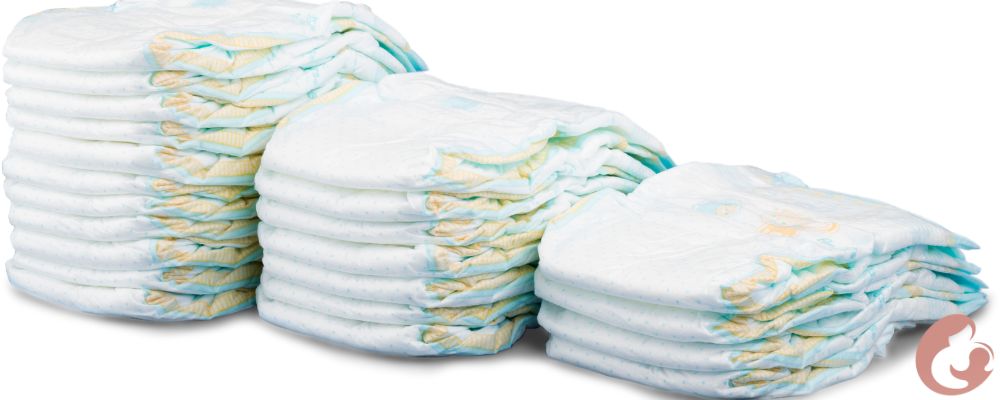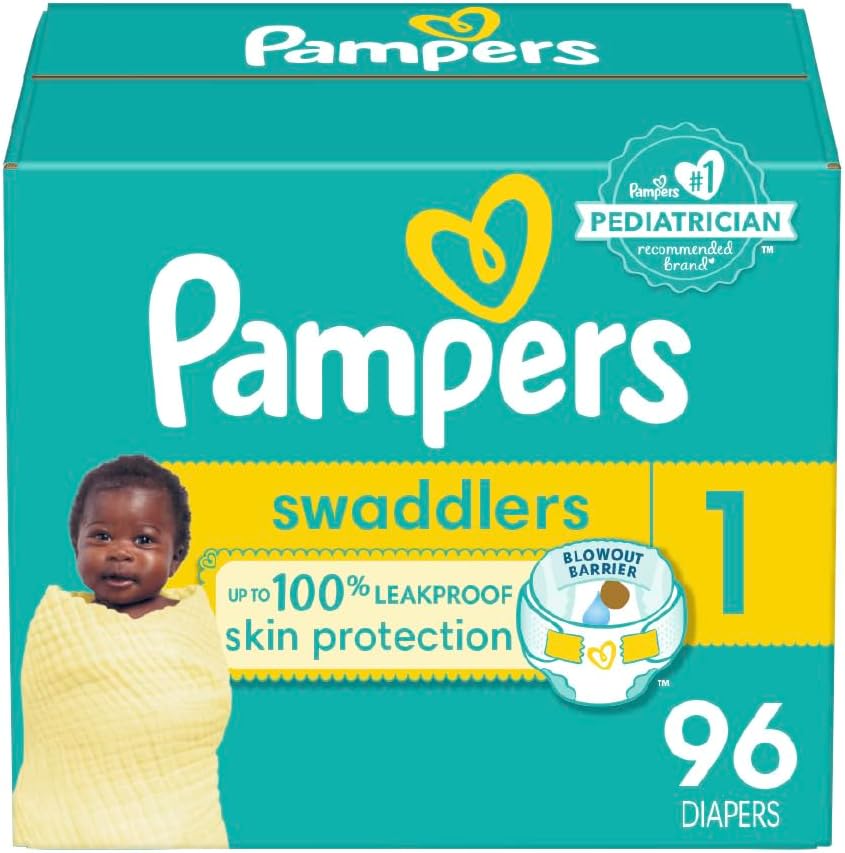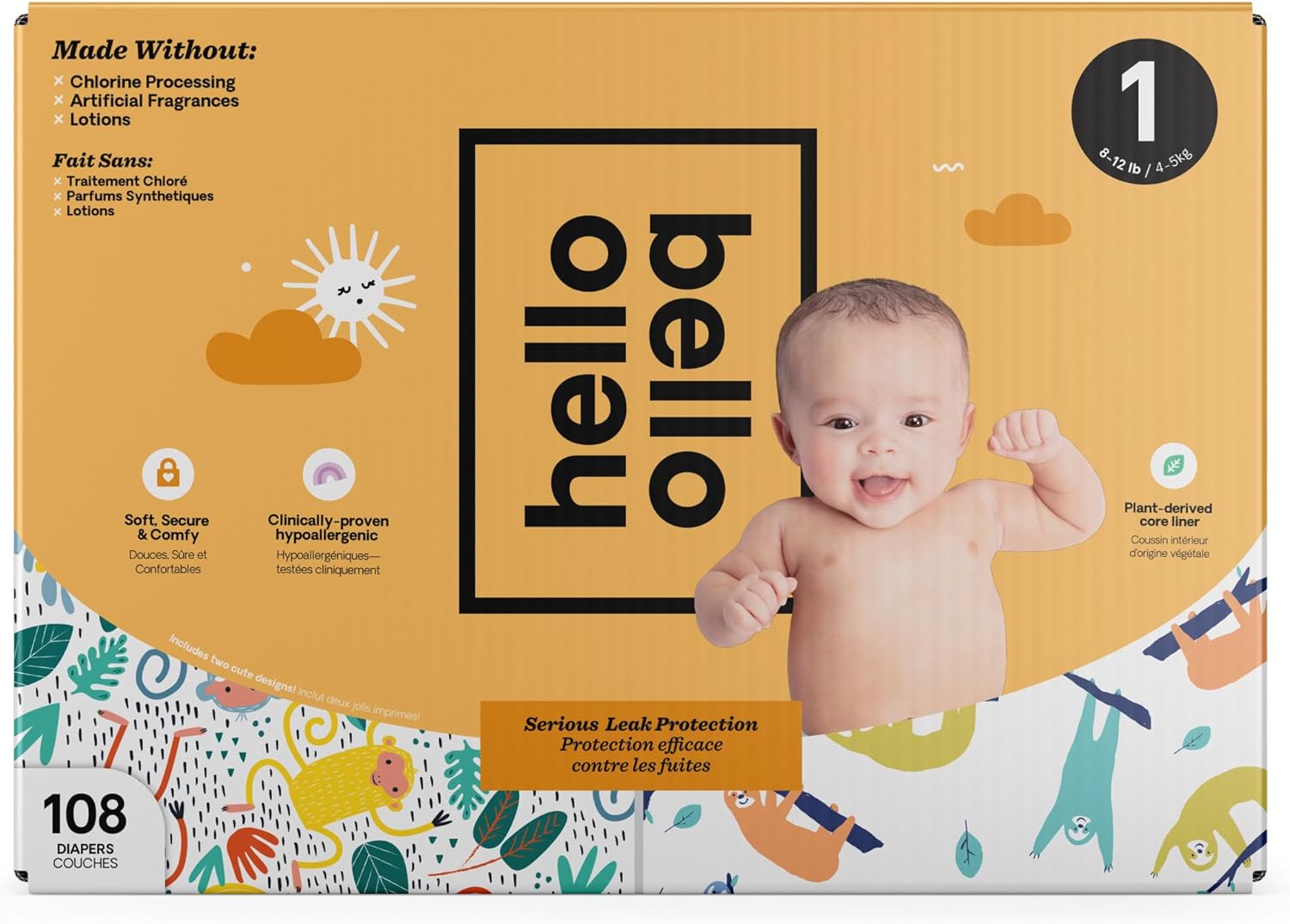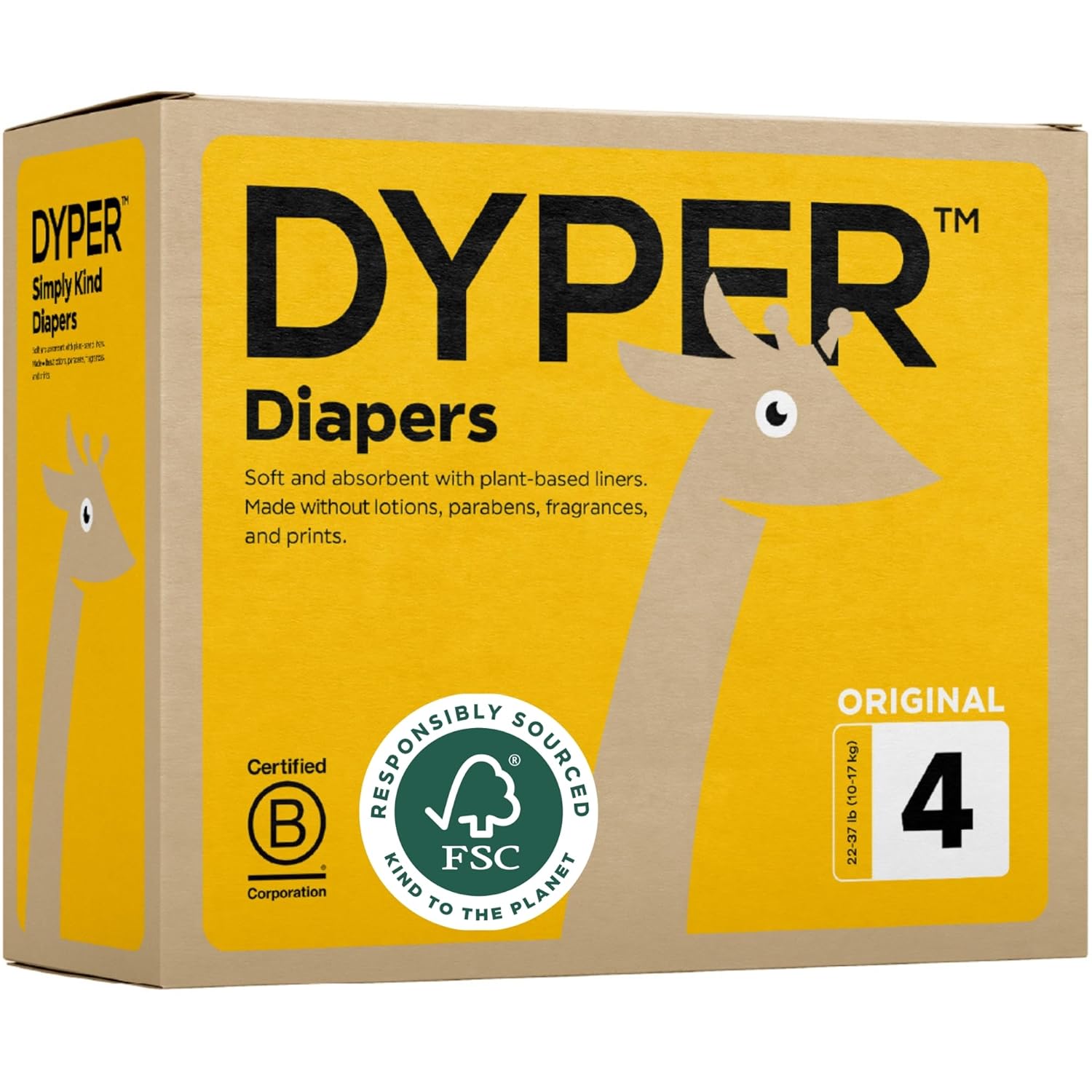Alright, new parents, let’s talk diapers. And no, it’s not as simple as grabbing the first pack you see at the store. Contrary to popular belief, not all diapers are created equal, especially when it comes to your precious newborn. 👶
The Diaper Lowdown: What Makes a Newborn Diaper the BEST?
Your baby’s skin is delicate, so finding a diaper that’s gentle, absorbent, and fits well is crucial. But where do you even begin? Fear not, we’re breaking down the essentials you need to know before you hit the diaper aisle.
Must-Have Features:
- Absorbency: Let’s face it, newborns pee… a lot! You’ll want a diaper that can handle those frequent changes and keep your little one dry. Look for diaper reviews and comparisons to see which brands excel at soaking up moisture.
- Fit: A snug fit prevents leaks and blowouts, which trust me, nobody wants to deal with. Consider your baby’s size and shape when choosing a diaper. Some brands offer newborn sizes specifically designed for those early weeks.
- Softness: Your baby’s bum deserves the best, so opt for diapers made from soft, breathable materials. This helps prevent diaper rash and keeps your little one comfortable.
- Wetness Indicator: This handy feature changes color when the diaper is wet, taking the guesswork out of diaper changes. Especially helpful during those first few weeks when you’re still getting the hang of things.
- Umbilical Cord Cutout: Some newborn diapers have a special cutout to protect your baby’s delicate umbilical cord as it heals. This isn’t essential, but it can be a nice feature to have.
Material Matters:
Diapers are typically made from disposable or cloth materials. Each has its pros and cons:
- Disposable diapers: Convenient and widely available, but they create more waste and can be expensive in the long run.
- Cloth diapers: Eco-friendly and reusable, but they require more effort to clean and maintain.
Don’t stress too much over this decision initially. Many parents use a combination of both, depending on their needs and preferences. If you’re eco-conscious, there are also some great eco-friendly disposable options on the market.
Choosing the Right Size:
Diaper sizes are typically based on weight, but it’s important to consider your baby’s shape and build as well. Newborn diapers usually fit babies up to 10 pounds, but some brands offer size N for smaller babies.
How to Choose the Right Diaper for Your Newborn:
Consider these questions when making your decision:
- How often do I want to change my baby’s diaper?
- What’s my budget for diapers?
- Am I concerned about the environmental impact of disposable diapers?
- Does my baby have sensitive skin?
Your Newborn’s Dream Team: 5 Best Diaper Brands for Happy Bottoms (2024 Reviews)
Alright, parents, it’s time for the moment you’ve been waiting for: our top picks for the best diaper brands for newborns in 2024. You might think all diaper brands are basically the same, but you’d be surprised at how much they vary in terms of features, materials, and overall performance. Let’s break it down so you can find your baby’s perfect match, all available on Amazon for your convenience.
Pampers Swaddlers Disposable Diapers
- Pros: Ultra-soft with a quilted liner, wetness indicator, excellent absorbency, trusted by hospitals, available in various sizes (Preemie, Newborn, Size 1, etc.)
- Cons: Not the most eco-friendly option, can be pricey
- Materials: Absorbent gelling material, polypropylene, polyethylene, polyester
- Size Range: Preemie to Size 7
- Price: Varies depending on size and quantity, typically around $0.25-$0.35 per diaper
Pampers Swaddlers are like a gentle hug for your newborn’s delicate skin. The quilted liner adds an extra layer of softness, while the wetness indicator takes the guesswork out of diaper changes. They’re designed to keep your baby dry and comfortable, day and night.
Huggies Little Snugglers Disposable Diapers
- Pros: Excellent leak protection, snug fit, pocketed waistband, soft and breathable, available in various sizes (Preemie, Newborn, Size 1, etc.)
- Cons: Not as soft as Pampers Swaddlers, not the most eco-friendly
- Materials: Absorbent gelling material, polypropylene, polyethylene, polyester
- Size Range: Preemie to Size 6
- Price: Varies depending on size and quantity, typically around $0.20-$0.30 per diaper
Huggies Little Snugglers are known for their exceptional leak protection. The snug fit and pocketed waistband help prevent blowouts, while the GentleAbsorb liner keeps your baby’s skin dry. They’re a great option for active babies who need extra protection.
Hello Bello Diapers
- Pros: Plant-derived core liner and top sheet, hypoallergenic, cute prints, affordable subscription service, available in various sizes (Newborn, Size 1, etc.)
- Cons: Not as widely available as other brands, may not be as absorbent for heavy wetters
- Materials: Plant-derived core and top sheet, other materials vary
- Size Range: Newborn to Size 6
- Price: Varies depending on size and quantity, typically around $0.22-$0.28 per diaper
Hello Bello diapers are a popular choice for parents looking for a more natural and eco-conscious option. They’re made with plant-derived materials and are free of harsh chemicals and fragrances. Plus, their playful prints add a touch of fun to diaper changes.
Dyper Bamboo Diapers
- Pros: Bamboo-based, incredibly soft, hypoallergenic, compostable, REDYPER program for soiled diaper return, available in various sizes (Newborn, Size 1, etc.)
- Cons: Can be more expensive than other brands, requires subscription service
- Materials: Bamboo viscose, sodium polyacrylate (absorbent material)
- Size Range: Newborn to Size 6
- Price: Varies depending on size and quantity, typically around $0.35-$0.45 per diaper
Dyper bamboo diapers are the ultimate in softness and sustainability. They’re made from bamboo fibres, which are naturally soft, absorbent, and hypoallergenic. The REDYPER program makes it easy to compost soiled diapers, making them an eco-friendly choice.
Coterie Diapers
- Pros: Luxuriously soft, highly absorbent, gentle on sensitive skin, stylish minimalist design, available in various sizes (Newborn, Size 1, etc.)
- Cons: More expensive than other brands, subscription-based
- Materials: Sodium polyacrylate (absorbent material), polypropylene, polyethylene, wood pulp
- Size Range: Newborn to Size 5
- Price: Varies depending on size and quantity, typically around $0.40-$0.50 per diaper
Coterie diapers are the Rolls-Royce of diapers. They’re made with premium materials that are incredibly soft and gentle on your baby’s skin. They also boast excellent absorbency, making them a great option for overnight use.
Special Cases: Diapers for Sensitive Skin, Overnight Protection, and Preemies
Now, let’s not forget those special cases. Not all newborns are the same, and some might need a little extra TLC when it comes to diapering. Don’t worry, we’ve got you covered with these tailored recommendations.
Sensitive Skin Saviors:
If your little one has sensitive skin, you might notice redness or irritation with certain diaper brands. Luckily, there are hypoallergenic diapers designed specifically for delicate skin. These diapers are free from harsh chemicals, fragrances, and lotions that can trigger rashes. Look for brands like Pampers Pure Protection, Huggies Special Delivery, or Seventh Generation Free & Clear.
Overnight Champs:
Overnight diapers are a game-changer for parents who want to maximize sleep (and who doesn’t?). These diapers offer superior absorbency to keep your baby dry throughout the night. Some popular options include Huggies Overnites, Pampers Baby Dry, and Hello Bello Nighttime. Remember, a well-rested baby means a well-rested parent!
Preemie Power:
Premature babies have unique needs, and finding diapers that fit properly is crucial. Many brands offer preemie-sized diapers that are designed to be gentle and snug on tiny bodies. Huggies Little Snugglers and Pampers Swaddlers both have preemie options.
Money-Saving Tips: Finding the Best Diaper Deals
Let’s be real, diapers can put a dent in your wallet. But don’t worry, savvy parents, there are ways to save on this baby essential without sacrificing quality.
Subscribe and Save:
Many diaper brands offer subscription services that deliver diapers right to your doorstep at a discounted price. This is not only convenient but can also save you money in the long run. Hello Bello, Honest Company, and Dyper all have subscription options.
Buy in Bulk:
Stocking up on diapers when they’re on sale can save you big bucks. Look for deals at warehouse clubs like Costco or Sam’s Club, or consider buying in bulk online.
Clip Those Coupons:
Don’t underestimate the power of coupons! You can find diaper coupons in newspapers, magazines, and online. Some brands even have digital coupons you can load onto your store loyalty card.
Consider Generic Brands:
Generic diaper brands often offer comparable quality to name brands at a lower price. Give them a try – you might be surprised at how well they perform!
Look for Diaper Banks:
If you’re struggling financially, diaper banks can provide free or low-cost diapers to families in need. Check online to see if there’s a diaper bank in your area.
Diapering 101: Mastering the Art of Diaper Changes and Rash Prevention
Okay, so you’ve picked the perfect diaper brand – now what? Don’t worry, even if you’re a diaper-changing newbie, we’ve got your back. There’s a myth that changing diapers is a messy and complicated affair, but with a few simple tips, you’ll be a pro in no time.
Diaper Changing Tips for Smooth Sailing:
- Gather Your Supplies: Before you start, make sure you have everything you need within reach – a clean diaper, wipes, diaper rash cream (just in case), and a changing pad.
- Lay Your Baby Down: Place your baby on a flat, safe surface like a changing table or the floor.
- Undo the Dirty Diaper: Gently unfasten the tabs and fold the dirty diaper in half, with the messy side facing in.
- Wipe Clean: Use baby wipes to gently clean your baby’s bottom from front to back. Make sure to get into all the creases and folds to prevent irritation.
- Apply Diaper Cream (If Needed): If your baby has any signs of diaper rash, apply a thin layer of diaper rash cream to the affected area.
- Put on the New Diaper: Slide the clean diaper under your baby’s bottom, ensuring the tabs are on the back. Fasten the tabs securely, but not too tightly.
- Dispose of the Dirty Diaper: Roll up the soiled diaper and secure it with the tabs. Toss it in the diaper pail and wash your hands thoroughly.
Preventing Diaper Rash:
Nobody wants to see their baby uncomfortable, so here are some tips to keep diaper rash at bay:
- Change Diapers Frequently: Newborns need diaper changes every 2-3 hours, or more often if they’ve pooped.
- Let Your Baby Air Dry: Whenever possible, let your baby’s bottom air dry for a few minutes before putting on a fresh diaper.
- Use a Barrier Cream: Applying a thin layer of diaper cream at each change can help create a barrier between your baby’s skin and wetness.
- Avoid Harsh Wipes: Choose baby wipes that are fragrance-free and alcohol-free, as these can irritate delicate skin.
Dealing with Blowouts and Leaks:
Even with the best diapers, blowouts and leaks can happen. Don’t panic! Simply strip your baby down, clean them up, and put on a fresh diaper. If blowouts are a frequent occurrence, you might need to try a different brand or size of diaper.
Remember, practice makes perfect. With a little time and patience, you’ll be a diaper-changing pro in no time. And always remember, a happy baby is a dry baby!
FAQ: Your Burning Diaper Questions, Answered!
Alright, parents, let’s tackle those lingering diaper questions that might be keeping you up at night (along with your newborn, of course!). You might think there’s a simple answer to every diaper question, but with babies, there are always surprises. Let’s unravel some of the most common queries:
When should I start buying diapers for my newborn?
The earlier, the better! Stock up on newborn diapers before your baby arrives. Most babies will go through about 10 diapers a day during those first few weeks. Start with a couple of packs of newborn-sized diapers and see how your little one grows. You can always size up later if needed.
What baby diapers hold the most urine?
Overnight diapers are designed to handle those long stretches of sleep, so they tend to be the most absorbent. Some brands, like Huggies Overnites and Pampers Baby Dry, are known for their impressive absorbency.
Which diapers do babies stay in the longest?
Again, overnight diapers are your best bet for extended wear. However, it’s important to change your baby’s diaper regularly, even if it’s not full, to prevent diaper rash. A good rule of thumb is to change them every 2-3 hours during the day and at least once overnight.
What are the safest diapers for babies?
Look for diapers that are hypoallergenic and free of harsh chemicals, fragrances, and lotions. Brands like Pampers Pure Protection, Huggies Special Delivery, and Honest Company Diapers are known for their gentle formulations.
Why do people prefer Pampers over Huggies?
Both Pampers and Huggies are popular diaper brands, and the preference often comes down to personal choice. Some parents find Pampers Swaddlers softer, while others prefer the snug fit of Huggies Little Snugglers. The best way to decide is to try both and see which one your baby prefers.
Any other questions? Feel free to ask in the comments below!
Remember, every baby is different, and what works for one may not work for another. The most important thing is to find a diaper that keeps your little one dry, comfortable, and happy.
Conclusion: Choosing the Perfect Diaper for Your Little One
Alright, parents, we’ve covered a lot of ground in our quest for the best diaper for your newborn. We’ve debunked the myth that all diapers are the same, explored the key features to consider, and even delved into the great disposable vs. cloth debate.
Remember, there’s no one-size-fits-all answer when it comes to diapers. Every baby is unique, and what works for one may not work for another. Your choice will depend on your lifestyle, budget, and environmental preferences.
Consider your Priorities:
- If convenience is key, disposable diapers might be your best bet. Look for brands with a wetness indicator, good absorbency, and a snug fit to prevent leaks and blowouts.
- If you’re environmentally conscious, explore cloth diapers or biodegradable disposable options. While they require more effort, they can be a rewarding choice for both your baby and the planet.
- If your baby has sensitive skin, opt for hypoallergenic diapers that are free of harsh chemicals and fragrances.
- If you’re on a budget, compare prices and consider generic brands or buying in bulk.
Don’t Be Afraid to Experiment:
It’s okay if you don’t find the perfect diaper on your first try. Don’t hesitate to experiment with different brands and types to see what works best for your baby. You might even find that your preferences change as your baby grows and develops.
We hope this guide has helped you feel more confident in your diaper choices. Remember, the most important thing is to choose a diaper that keeps your little one dry, comfortable, and happy. And trust me, a happy baby makes for a much happier parent! .If you would like to read an article about How Often Should You Change a Newborn Diaper?, please click here.











[…] you find the perfect fit. if you are interested in knowing about Best Newborn Diapers so Please click here to read the […]